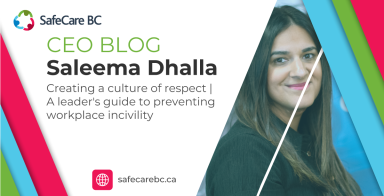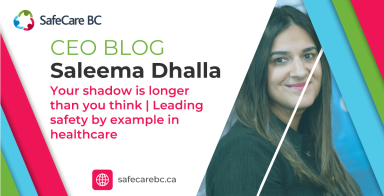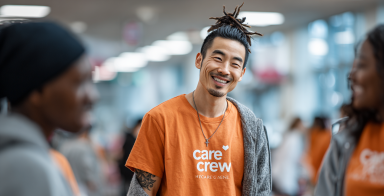What is organizational culture?
Organizational culture refers to the shared values, beliefs, norms, and practices that shape how people within an organization interact and work together. It encompasses the organization’s mission, leadership style, communication patterns, workplace environment, and traditions.
A strong organizational culture fosters employee engagement, collaboration, and productivity, while a weak or toxic culture can lead to dissatisfaction and high turnover. A positive organizational culture in healthcare ultimately benefits both employees and residents and clients by creating a safe, respectful, and high-performing environment/
After this huddle, staff should be able to:
- Explain organizational culture and why it matters in healthcare.
- Identify specific behaviours and characteristics that contribute to a positive or negative organizational culture.
- Recognize how organizational culture influences psychological safety, communication, teamwork, and resident or client and staff safety and well-being.
Guiding questions
- What does a positive organizational culture look like to you?
- Can you think of a time when you felt supported at work? What made it feel that way?
- What challenges do we face in maintaining a positive culture in our busy healthcare environment?
- What is one thing you can do today to contribute to a more positive and supportive workplace?
Scenario 1
- Situation:Jenny, a housekeeper, proposes a plan to enhance common area sanitization, aiming to proactively reduce infection risks for residents.
- Positive culture response: Jenny feels comfortable sharing her ideas with her team and manager. Her colleagues actively listen to the suggestions, provide constructive feedback, and explore the idea’s feasibility. Even if her idea isn’t ultimately adopted, Jenny feels valued and encouraged to contribute further.
- Negative culture response: Jenny hesitates to share her ideas; fearing being dismissed or ridiculed. When she has shared ideas in the past, her colleagues have ignored them or shut them down without consideration. Jenny feels discouraged and doesn’t want to share any more ideas.
Scenario 2
- Situation: Luke, a care aide, assists a client with mobility challenges in transferring from their bed to a wheelchair. The client loses balance, and Luke struggles to support them safely.
- Positive culture response: Luke immediately calls for assistance. After the incident, he discusses the incident with his supervisor, who provides additional training and support. Luke feels comfortable asking for help in the future.
- Negative culture response: Luke hesitates to call for help, fearing it will be seen as a failure to handle the situation independently. Luke and the client are at greater risk of injury, and he experiences unnecessary stress. He doesn’t report the incident.
Scenario 3
- Situation: Alex and Inaya disagree about the best approach to care for a resident.
- Positive culture response: Alex and Inaya communicate openly and respectfully, actively listening to each other’s perspectives. They use a structured approach to clarify the situation and reach a consensus. They use the conflict as an opportunity to learn from each other and improve.
- Negative culture response: Their conflict escalates into a personal argument, with Alex and Inaya interrupting each other, raising their voices, and making personal attacks. Their failure to resolve the conflict leads to ongoing tension and resentment, which impacts the resident’s care.
Guiding questions for each scenario
For scenario 1:
- What are some ways we can encourage innovation and creativity?
- Have you ever had an idea for improvement but hesitated to share it? Why?
- How can we create a culture where everyone feels comfortable sharing ideas?
For scenario 2:
- What are the best practices for assisting clients with mobility challenges?
- How can we create a culture where staff feel comfortable asking for help when needed?
- What training or support would help improve client mobility assistance?
For scenario 3:
- How do we typically handle disagreements or conflicts within our team?
- How can we foster a culture of open communication and respectful disagreement?
- What are some healthy ways to express differing opinions?
Notes to the huddle leader
- Create a safe space for sharing.
- Remind participants that all perspectives are welcome and there are no right or wrong answers.
- Remind participants of the resources available for support and guidance regarding workplace culture and psychological well-being (e.g., employee assistance programs and mental health services).
- Invite participants to reflect on how organizational culture influences psychological safety, communication, teamwork, and ultimately, resident or client safety and staff well-being.
- Consider the specific behaviours and characteristics contributing to a positive or negative organizational culture.


























